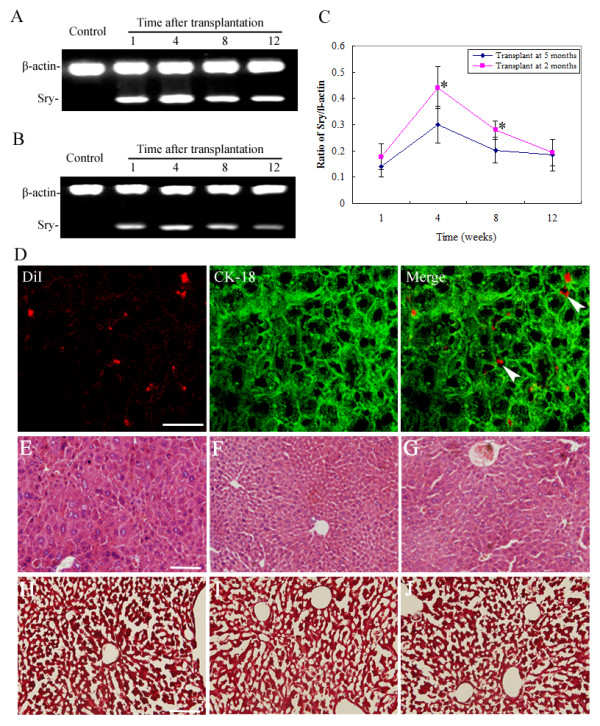Figure 1.

Engraftment and population after bone marrow (BM) cells transplantation. The DL donor transplant cells population and expansion were evaluated using PCR for the Sry genes in female tx mice livers in different groups. (A and B) The presence of male DL Sry fragments was confirmed in tx mice treated with DL BM cells transplantation at 2 and 5 months of age respectively. Lane 1: saline-treated mice; lane 2-5: tx mice at 1, 4, 8 and 12 weeks post-DL BM cells transplantation. (C) Ratios of the Sry genes to beta-actin levels were calculated in mice treated with DL BM cells transplantation at 2 and 5 months of age at different time points (n = 6). Values were mean ± SD. Data showed a normal distribution and were analyzed using ANOVA. *P < 0.05, compared with animals from the 5 months of age group. (D) Representative immunofluorescent staining for CK-18 in the recipient liver showed that CM-DiI labeled donor BM cells (red) were stained positive for the hepatocellular antigen CK-18 (green) at 4 weeks post-transplant (merged fluorescence is indicated by the arrow). Scale bar: 50 μm. (E-G) HE staining showed the hepatic structures in saline or tx BM cells or the DL BM cells treated groups. (H-J) Masson's trichrome staining showed no obvious liver fibrosis in saline or tx BM cells or the DL BM cells treated groups. Scale bar: 100 μm.
